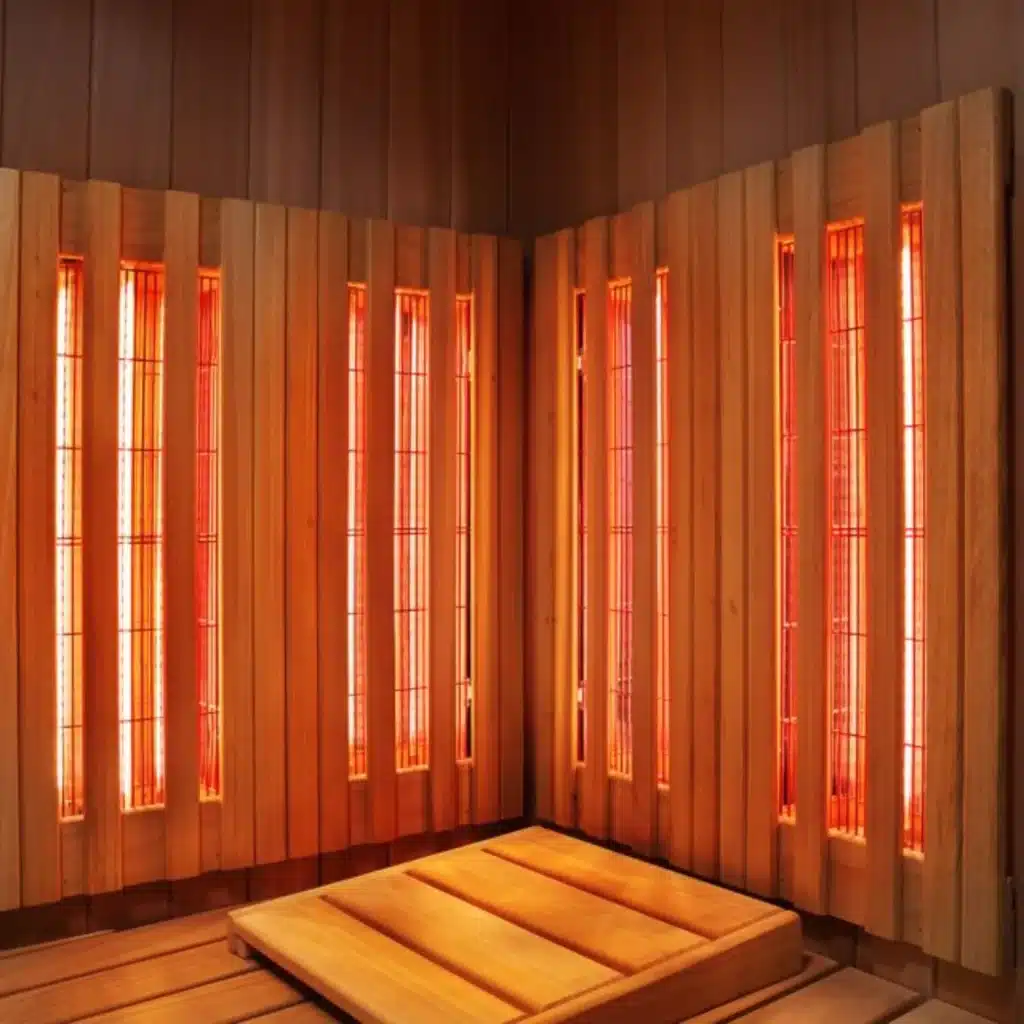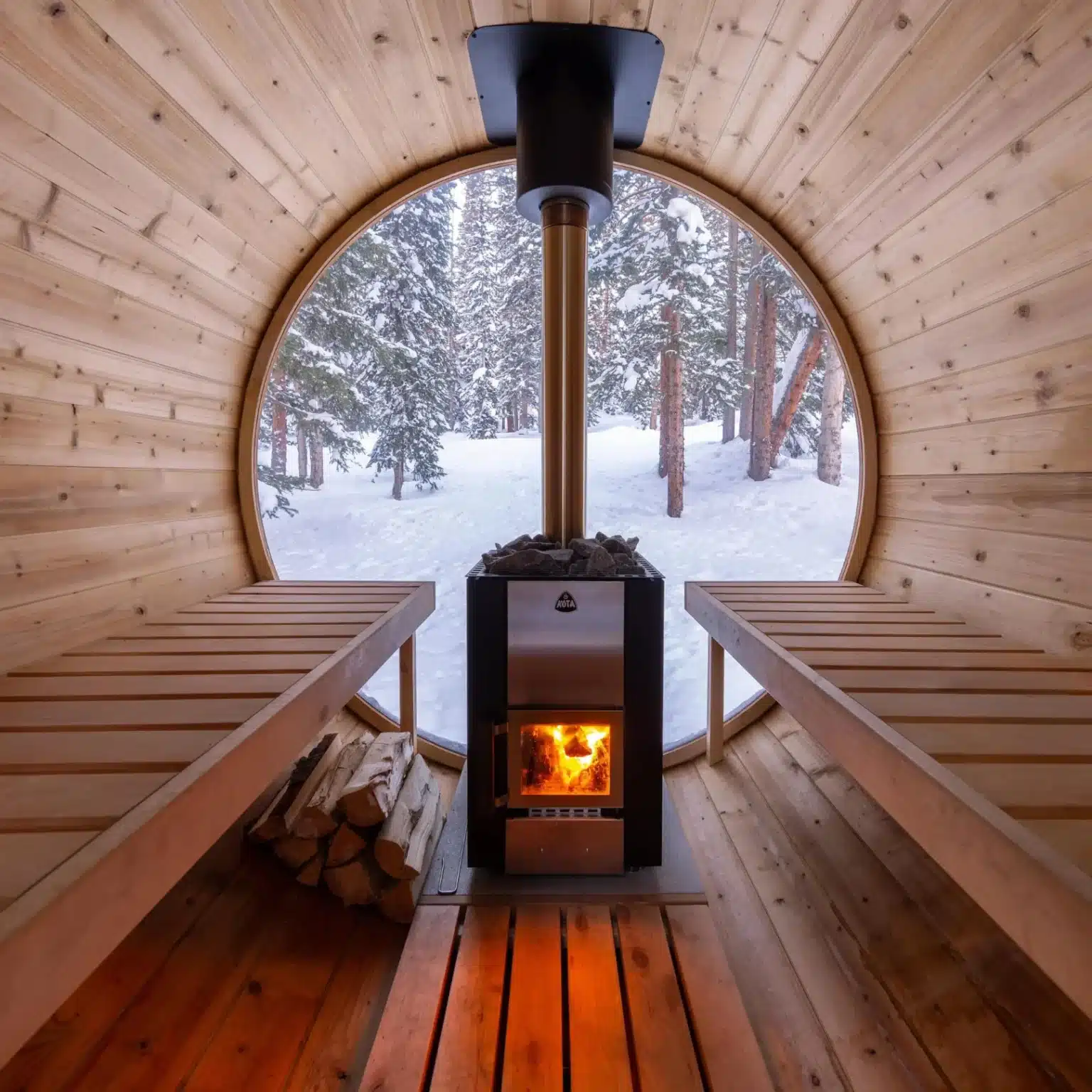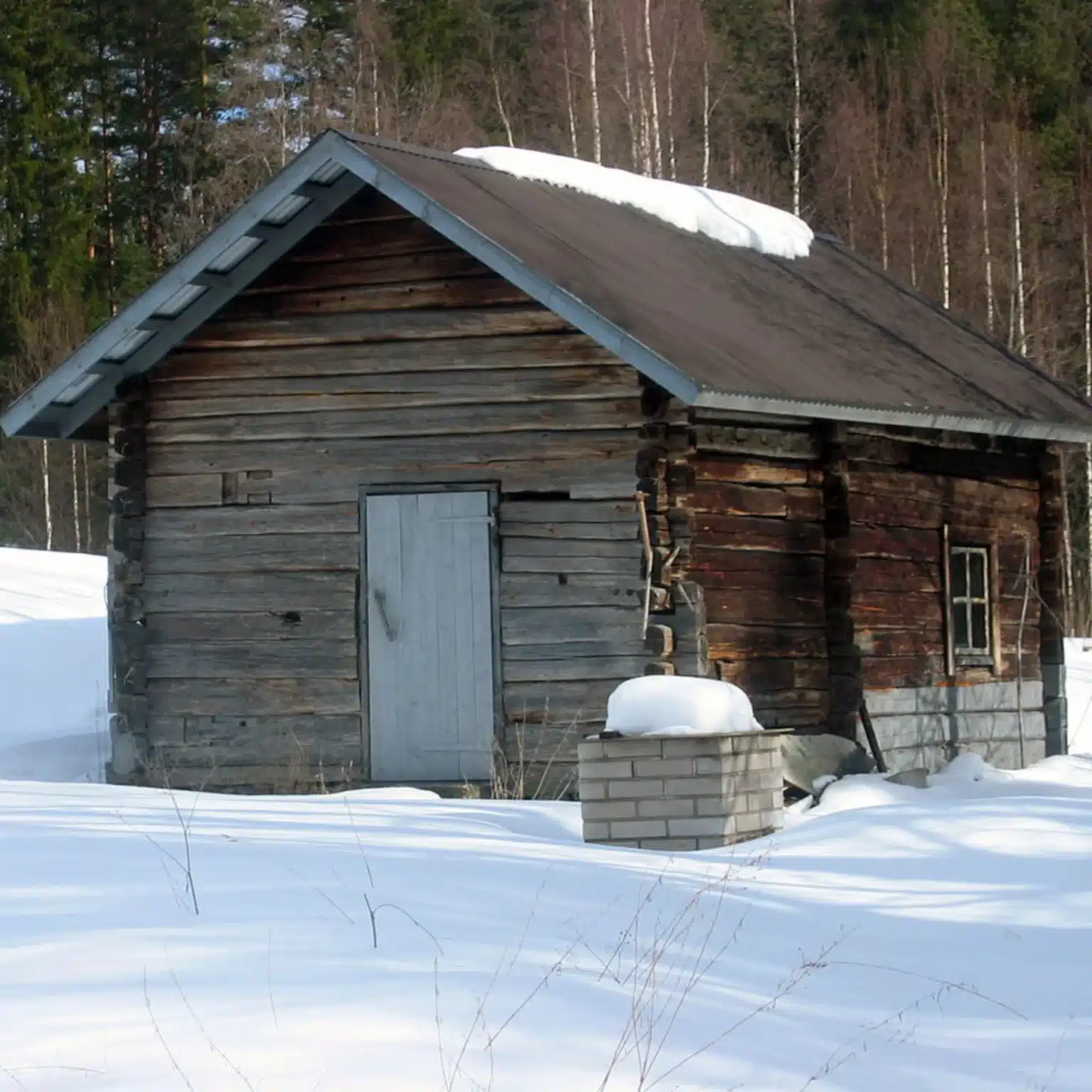- Infrared saunas and sauna blankets provide gentle heat (50-60°C), ideal for relaxation, muscle recovery, and heat-sensitive individuals
- Finnish saunas offer intense, dry heat (70-100°C) with adjustable humidity for a classic sauna experience.
- Portable saunas, typically infrared (50-60°C) & steam (40-50°), are convenient for those with limited space and offer flexible use
- Infrared sauna blankets (50-60°C) are portable, space-saving, and provide sauna benefits anywhere
Saunas have been cherished for centuries as spaces of relaxation, health benefits, and social interaction. Today, they come in various types, each offering a unique experience and a set of benefits that cater to different preferences and needs. If you’re new to the world of saunas and looking to understand the different types available, this guide will walk you through the various options, including Traditional Finnish Saunas, Infrared Saunas, Steam Saunas (Steam Rooms), Portable Saunas, Wood-Burning Saunas, Electric Saunas, and Infrared Sauna Blankets.

Traditional Finnish Sauna
The traditional Finnish sauna is perhaps the most iconic type, deeply rooted in the culture of Finland. It involves a room made of wood, usually spruce or cedar, with a heater that can be electric, gas, or wood-burning. The heater warms stones that, in turn, heat the room. Water can be poured over these stones to create steam, increasing the humidity and overall heat sensation. The wood-burning stove option provides a rustic and nostalgic atmosphere, complete with the crackling sound of wood and the aroma of burning logs. Electric and gas heaters offer modern conveniences, such as precise temperature control and ease of use. The process of pouring water over the hot stones to create steam is known as “löyly,” and it is an essential part of the Finnish sauna experience, allowing bathers to control the humidity and intensity of the heat.
- Heat Source: Electric heater, gas heater, or wood-burning stove.
- Temperature: Typically between 70-100°C (158-212°F).
- Humidity: Low, but can be increased with steam from water poured on hot stones.
- Experience: Intense heat that promotes heavy sweating, detoxification, and muscle relaxation
- Ideal For: Individuals looking for a traditional and intense sauna experience with a high heat environment.

Infrared Sauna
Infrared saunas use infrared heaters to emit radiant heat, which is absorbed directly by the body rather than heating the air around you. This type of sauna operates at lower temperatures, making it more tolerable for those who may find traditional saunas too hot. Infrared saunas are often considered more accessible to a broader range of people due to their lower operating temperatures. The infrared rays penetrate deeper into the skin, which helps in relieving muscle pain, improving circulation, and promoting relaxation without the extreme heat. These saunas can be beneficial for those with heat sensitivity, cardiovascular conditions, or anyone new to sauna use. They also tend to heat up more quickly than traditional saunas, making them convenient for quick sessions.
- Heat Source: Infrared heaters.
- Temperature: Typically between 50-60°C (122-140°F).
- Humidity: Low, as there is no steam.
- Experience: Gentle and deep-penetrating heat that warms the body directly, promoting relaxation and muscle recovery.
- Ideal For: Individuals sensitive to high temperatures and those looking for a sauna that can aid in muscle recovery and relaxation.

Steam Sauna
Steam saunas, also known as steam rooms, differ significantly from other types by offering a moist heat environment. These saunas use a steam generator to fill the room with humid heat, making the air feel warmer and often leading to a less intense experience compared to dry saunas. Steam rooms create a dense, humid environment that is excellent for opening pores and promoting skin health. The high humidity is particularly beneficial for individuals with respiratory issues, such as asthma or allergies, as it helps clear sinuses and alleviate congestion. The temperature in steam rooms is lower than in traditional saunas, making them more comfortable for extended sessions. The moist heat can also aid in muscle relaxation and tension relief.
- Heat Source: Steam generator.
- Temperature: Typically between 40-50°C (104-122°F).
- Humidity: High, close to 100%.
- Experience: Soothing and moist heat beneficial for respiratory health and skin hydration.
- Ideal For: Individuals looking for a more humid heat experience and those with respiratory issues seeking relief.

Portable Sauna
Portable saunas are an excellent option for those with limited space or a need for mobility. These saunas come in various forms, including foldable tents with infrared heaters or small cabins that can be assembled and disassembled as needed. Portable saunas offer a versatile and flexible way to enjoy sauna benefits without the need for a permanent installation. They are easy to set up and store, making them ideal for people who live in apartments or small homes. Most portable saunas use infrared technology, providing a gentle heat experience. Some models are designed as tents where the user sits inside with their head exposed, while others are more like compact cabins that can be assembled in any room. These saunas are also typically more affordable than permanent installations.
- Heat Source: Typically infrared heaters.
- Temperature: Varies, but usually similar to traditional infrared saunas.
- Humidity: Low.
- Experience: Convenient and cost-effective sauna experience that can be set up at home without extensive installation.
- Ideal For: Those with space constraints or looking for a budget-friendly, easy-to-set-up sauna solution.

Wood Burning Sauna
The wood-burning sauna is a traditional type that uses a stove to burn wood, providing a unique, rustic experience. The wood stove heats the stones, which in turn heat the room. This type of sauna requires a chimney for the smoke. Wood-burning saunas offer a charming and nostalgic experience, reminiscent of early sauna traditions. The process of chopping wood, lighting the fire, and waiting for the sauna to heat up adds a ritualistic element to the experience. The smell of burning wood and the gentle crackle of the fire enhance the sensory experience, making it particularly soothing and immersive. However, wood-burning saunas require more maintenance, including regular cleaning of the chimney and stove.
- Heat Source: Wood-burning stove.
- Temperature: Similar to traditional Finnish saunas, around 70-100°C (158-212°F).
- Humidity: Low, can be increased with steam from water poured on hot stones.
- Experience: Authentic, rustic, and aromatic experience due to the burning wood.
- Ideal For: Those seeking an authentic, traditional sauna experience with the added charm and aroma of burning wood.

Electric Sauna
Electric saunas are among the most common and convenient types. They use electric heaters to warm the stones and the air in the sauna room. These saunas are easy to control and maintain, making them popular for both commercial and home use. Electric saunas offer the benefits of traditional saunas with the added convenience of modern technology. The electric heater allows for precise temperature control and even heating, ensuring a consistent sauna experience every time. They are relatively easy to install and require less maintenance than wood-burning saunas. The ability to adjust humidity levels by adding water to the stones provides flexibility in customizing the sauna experience.
- Heat Source: Electric heater.
- Temperature: Typically between 70-100°C (158-212°F).
- Humidity: Low, adjustable with water on hot stones.
- Experience: Convenient, easy-to-use, and consistent heat.
- Ideal For: Those looking for a reliable and easy-to-maintain sauna with consistent heating.

Infrared Sauna Blanket
An infrared sauna blanket is a portable and highly convenient option that allows users to experience the benefits of an infrared sauna without the need for a dedicated space. These blankets are designed to wrap around the body and use infrared heat to promote sweating and relaxation. Infrared sauna blankets are highly portable and can be used almost anywhere, making them perfect for people with limited space or those who travel frequently. They are designed to deliver the same benefits as an infrared sauna, such as improved circulation, detoxification, and relaxation. These blankets are typically made from durable materials that can withstand high temperatures and are easy to clean. Users can lie down, wrap themselves in the blanket, and enjoy a sauna session in the comfort of their own home.
- Heat Source: Infrared heaters embedded in the blanket.
- Temperature: Adjustable, typically reaching similar levels to infrared saunas.
- Humidity: Low.
- Experience: Portable, easy to use, and effective for relaxation and detoxification.
- Ideal For: Individuals looking for a highly portable and space-saving sauna option that can be used anywhere.
Understanding Sauna Experiences
While exploring the various types of saunas, it’s essential to understand that each provides a distinct experience:
- Heat Intensity: Traditional Finnish and wood-burning saunas offer intense heat, suitable for those who enjoy high temperatures and heavy sweating. In contrast, infrared saunas provide a gentler heat that penetrates the skin deeply.
- Humidity Levels: Steam saunas create a moist environment, beneficial for respiratory health and skin hydration. Traditional and electric saunas can adjust humidity levels by adding water to the stones, while infrared saunas and sauna blankets typically offer a dry heat experience.
- Convenience and Space: Portable saunas and infrared sauna blankets are ideal for those with limited space or looking for a budget-friendly option. Electric and traditional saunas, while requiring more space and installation, provide a more permanent and robust sauna experience.
- Health Benefits: All saunas promote relaxation, improve circulation, and aid in muscle recovery. However, the specific benefits can vary. For example, infrared saunas are often praised for their ability to penetrate deeper into tissues, making them effective for pain relief and muscle recovery, while steam saunas are excellent for respiratory health and skin hydration.
So… Which Sauna is Best?
This is a case of different strokes for different folks. There is no single answer to which sauna is best as it largely depends on individual preferences and needs. Traditional Finnish and wood-burning saunas are ideal for those who enjoy high heat and a classic sauna experience. Infrared saunas are perfect for individuals who prefer a gentler, more tolerable heat and are seeking benefits such as muscle recovery and relaxation. Steam saunas are suitable for those who benefit from high humidity and respiratory health improvements. Each have their own benefits and are the best choice for different users but one thing is universal which is that regardless of which one you pick it will be an incredible step in progressing your health and wellness.

THE ROLE OF SAUNAS IN EXERCISE RECOVERY
Traditionally known for its relaxation benefits, the sauna also offers a host of advantages that can significantly enhance athletic recovery.

WHAT ARE THE DIFFERENT KINDS OF SAUNAS?
This guide will walk you through the various options, including Traditional Finnish Saunas, Infrared Saunas, Steam Saunas (Steam Rooms), Portable Saunas, Wood-Burning Saunas, Electric Saunas, and Infrared Sauna Blankets.

INFRARED SAUNA TYPES: FULL SPECTRUM VS FAR INFRARED ONLY SAUNAS
Key Takeaways Full spectrum saunas to emit a range of infrared wavelengths: near (NIR), mid (MIR), and far infrared (FIR). Far Infrared Saunas only emit

THE HISTORY OF SAUNA: FROM ANCIENT RITUALS TO MODERN WELLNESS
Key Takeaways The practice of ‘Sauna’ is 2000 years old and originated in Finland The introduction of the metal stove in the late 19th century

40% REDUCTION IN ALL CAUSE MORTALITY… INCREDIBLE INSIGHTS FROM A FINNISH STUDY
Key Takeaways Using Sauna 2-3 times per week reduced risk of dying by 22% Using Sauna 4-7 reduced mortality risk by 40% Cardiovascular health &

